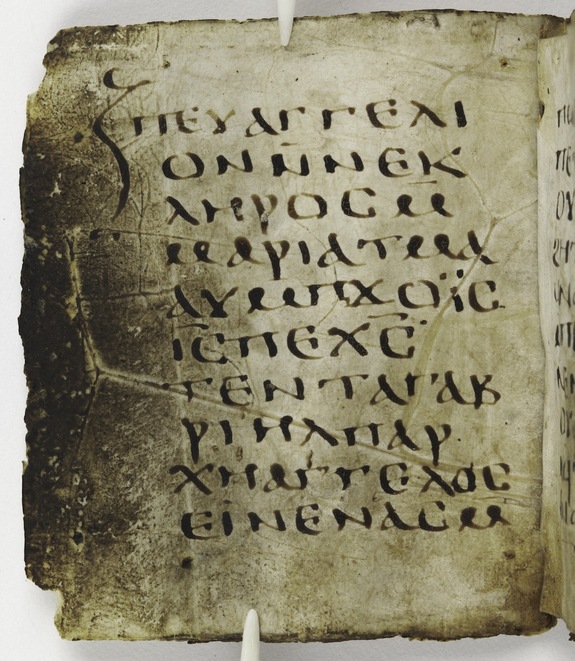
A lost gospel dating to the sixth century has been discovered at the Harvard Art Museums. The manuscript, in Coptic, has been named the Gospel of the Lots of Mary, and has languished unrecognized in the collection of the college’s Sackler Museum since 1984.
“The Gospel of the lots of Mary, the mother of the Lord Jesus Christ, she to whom Gabriel the Archangel brought the good news,” reads the opening of the 160-page book. “He who will go forward with his whole heart will obtain what he seeks. Only do not be of two minds.”
The text differs from traditional gospels in that it does not focus on the life and teachings of Jesus, but instead provides a list of what Princeton University professor Anne Marie Luijendijk, whose book Forbidden Oracles? The Gospel of the Lots of Mary analyzes the text, calls oracles. These 37 statements were likely used for divination, with the reader asking the gospel a question and turning to a random page for enlightenment.
“The fact that this is not a gospel in the traditional sense gives ample reason to inquire about the reception and use of the term ‘gospel’ in late antiquity,” Luijendijk wrote. The word “gospel” literally translates to “good news,” and, as she pointed out, “nobody who wants to know the future wants to hear bad news.”
Among the book’s hopeful messages is oracle 24: “Stop being of two minds, o human, whether this thing will happen or not. Yes, it will happen! Be brave and do not be of two minds. Because it will remain with you a long time and you will receive joy and happiness.”
The gospel was donated to the school by Beatrice Kelekian, whose father-in-law was “an influential trader of Coptic antiquaries,” according to Luijendijk.
But the book’s origins remain a mystery.
The find is the second ancient gospel discovery to make the news this year: last month, Live Science reported that a papyrus fragment from 90 A.D., found in an Egyptian mummy mask disassembled by archaeologists, contained the oldest-known written version of a gospel, that of Mark. Other, more recent Christian manuscripts from the time of St. Francis were recently on view in Brooklyn (see St. Francis Manuscripts Come to New York), and a construction project in Galilee may have uncovered an archaeological site where Jesus once walked (see Jesus’s Ancient Stomping Grounds Discovered at Galilean Hotel).